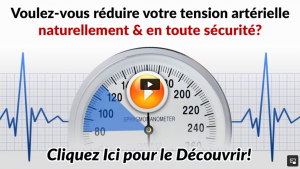The #1 Rated Blood Sugar Formula
Get Active to Lower Your Blood Pressure

Normal blood pressure is around 120/80 mmHg. It may rise to 140/90 after aerobic exercise such as running or swimming, though this is a ballpark figure as blood pressure varies a great deal from one person to another. It should then return to normal after a few hours.
Exercise could be as good as medicines
A recent study from December 2018 noted that the effects of exercising and being active on the body could be just as good as taking anti-hypertensive medicines to control high blood pressure. The study also showed that a combination of exercising and taking medicines reduced the systolic blood pressure (the higher of the two values in your blood pressure) more effectively than individual methods. The results of the study are applicable to people of all races and ethnicities.[2] That gives us enough motivation to put our jogging shoes on, right?Good news for people with resistant hypertension
In resistant hypertension, the blood pressure remains high even after taking medicines to lower it. A study published in the Hypertension Journal of the American Heart Association (AHA) showed that exercise could be used to manage resistant hypertension. In the study, the systolic blood pressure went down by an average of almost 6 points for participants with resistant hypertension who carried out aerobic exercise. From these results, it can be said that regular exercise could help in controlling even drug-resistant hypertension.[3]What exercises should I do to control my hypertension?
The first thing to remember is, if you haven’t stretched your muscles in a while, you might want to start slow. The idea of getting fit and lowering your blood pressure may sound exciting, but you run the danger of overdoing it on the first day. Instead, start with a 20-minute workout session initially, and gradually increase the duration of the exercise over the following days. Here are some exercises that can help you control your high blood pressure:- Brisk walking regularly for about 30 to 45 minutes daily can help reduce your blood pressure by 5 to 8 mmHg. Make this a fun activity by going outdoors or asking a friend to join you on your walk. Go for a hike once in a while, and use the stairs as often as you can.
- Swimming and biking are other fun ways that you could incorporate exercise in your schedule. Going social with these activities can be a good motivator. Join a group or class that regularly sets out on such fun activities.
- Resistance exercises can also be included on alternate days, like light weightlifting. Strength training – 10-15 repetitions of each exercise – can be incredibly beneficial. Besides, it will give you some variety, and break the monotony. In addition, building muscle mass keeps the resting metabolic rate high and helps keep the flab off even when you are not exercising.
- Aerobics is another way you can include a healthy amount of exercise in your routine. It is an invigorating form of exercise, and fun if you do it with friends. You can start at 20 minutes thrice a week and go up to 150 minutes a week. [4, 5]
being active and blood pressurebenefits of exercise to blood pressurebest exercises to lower Blood Pressurebrisk walking helps lower blood pressureExercise and Blood Pressureexercise medication to hypertensionhealthy lifestyleRemedy for lowering blood pressurestaying active for better blood pressure






